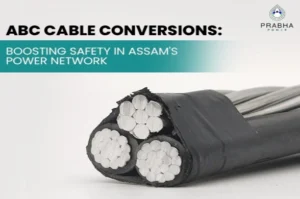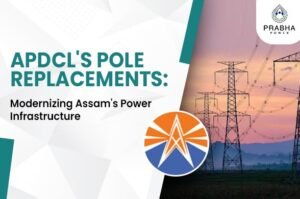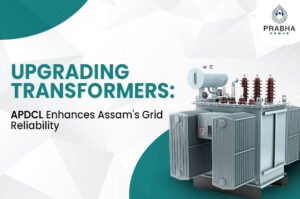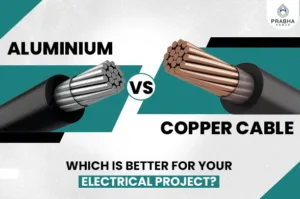
APDCL pole replacements may seem like the typical routine maintenance at first glance, but in fact, they are a real sign of the ongoing transformation of the power supply in Assam. Replacements are showing up in towns and villages alike, part of the larger mission to replace outdated methods and systems, and provide the citizens of Assam with more reliable electricity.
This is not simply replacing one pole with another pole. It is about replacing and improving the backbone of the grid, replacing poles with poles that are safer for technicians and communities, that will support more energy demands, and strong enough to withstand harsher weather. All of this is part of the larger vision of modernizing Assam’s power infrastructure, necessary for reducing outages and developing smarter energy use.
More importantly, however, the fastest progress is being made in rural areas that can now see stark overall improvements. Rural electrification in Assam is gaining real traction now, with improved infrastructure leading to education access, healthcare, and growth in local business. What to the outside eye may look like construction is a pathway to energy equity, allowing for every corner of the state to receive electricity reliability.
The Backbone of Power: Why Poles Are Important
Sometimes poles get overlooked in the big picture of the power story, but they fulfil some of the most important duties. They hold cables up, help ensure there is space from roads and trees, and they help provide transmission of electricity over great distances safely and reliably. When they become old, weak, or corroded, they not only have a performance effect, but they also become a hazard to people.
The primary issues with aged poles are:
- Common breakages during storms and floods
- Electric shock risk and fire risk
- Impacts of poor power supply to rural areas
- Difficulties completing emergency repairs or upgrades
Now imagine this enlarged by thousands of kilometres of undated poles across the State of Assam. That is the challenge that APDCL (Assam Power Distribution Company Limited) is facing with its large-scale pole replacement program.
An Innovative Strategy: More than Just Pole Replacement
What sets APDCL’s pole replacement strategy apart is its foresight. It’s not only restorative but also fundamentally constructive while innovating to both redesign things and build things better. Rather than waiting for infrastructure to fail, APDCL anticipates failure by proactively assessing risk-prone areas and following preemptive maintenance methodologies.
APDCL’s teams are already mobilized to execute this on the ground, discovering and surveying real-world conditions, while facing many less-than-hospitable environments. By leveraging the power of GPS and digital mapping, they are redesigning layouts to enhance coverage and reliability. Their materials to install are also chosen for specification, not just what is commercially available; durability, resilience, and are chosen to suit and endure Assam’s demanding climate cycles (monsoon floods, horrible landslides, and extremely hot weather).
This is no longer infrastructure with the focus on developing a response based on mankind’s best interest, but, in anticipation of outages, in power that can be restored as quickly as possible, and oriented to attaining fewer outages in the first place. This pole replacement strategy is not only a pole replacement strategy; it is part of a greater commitment to achieve a modern, stable and inclusive future emanating from the north-eastern state of Assam.
Here’s how the new poles will be better:
- Galvanised steel and RCC will offer better durability compared to wood or old concrete.
- The anti-corrosion coating will be absolutely essential in flood-prone areas.
- Also, we will now integrate smart poles into today’s project, including the preparation of smart meters and grid automation.
- The heights of our new poles will also be standardised to ensure better wire severity and clearances.
In other words, this project is not just about improving today’s grid but a scalable and sustainable electricity infrastructure for Assam in the next 30-50 years.
Modernisation of Assam’s Power Infrastructure: A Movement, Not a Moment
Assam is poised for dramatic infrastructure development. With its central location as the gateway to Northeast India and a growing number of people, demand for power is exploding. If you are talking about EV vehicles, digital banking, online education, or the micro industry, none can progress without basic, stable electricity.
- Overall, Assam power infrastructure modernisation entails:
- Smart Meters for letting customers know their usage and accurate bills
- Underground wiring in cities to reduce dangerous overhead wires
- Rebuilt substations with remote/monitoring and SCADA developments
- Solar projects connected to the grid for cleaner energy
Upgraded fault detection systems so that outages are reduced or revenue recognition during outages is shorter and quicker
Pole replacement represents the first of many steps in this stacked approach. If poles aren’t reliable, the house of cards falls. It is like building a skyscraper on a shaky foundation. APDCL understands this, and that is why the pole project is receiving the attention it warrants.
How It Impacts Daily Life in Assam
Let’s take a moment away from the technical side of things. What does this mean for everyday people in Assam?
1. Students Are Able To Study Undisturbed
In many villages where power was often cut off after 7 PM, students had to partner a kerosene lamp or burn firewood with their homework. Now there is a steady light available for students to do their work.
2. Small-Scale Services Can Now Be Better Utilized
Each of the tailoring shops, welding units, computer cafes, and local food places has avoided losing hundreds of rupees due to poor and inconsistent power supply. Now that the poles have been replaced and the power has been constant, it makes it easier for small-scale services to operate without losing a day’s work.
3. Farmers Are Allowed More Control Over Not Just Irrigation
Those same power-dependent irrigation pumps for agriculture spent too much time being turned off due to electrical blackouts. However, because of stronger newer poles with a consistent electric supply, farmers will be able to irrigate their fields on time, resulting in much better crops.
4. Medical Services Receive a Lifeline
Health sub-centres and clinics in remote areas were often vulnerable during outages. With the new infrastructure, they now have improved reliability of electricity – vital for refrigeration of medicines, the ability to light nighttime procedures and keeping diagnostic equipment operational.
5. Households Save
Fewer outages mean fewer appliance repairs. Stabilised voltage means fans, fridges, and televisions will last longer. That is a real savings for families who cannot afford frequent replacements.
Rural Electrification in Assam: Closing the Last Mile
Rural electrification in Assam has never been easy, with rugged terrain, riverine islands, and poorly connected areas, and many of these relied on makeshift poles or polling stations that are typically very old and dangerous.
But APDCL’s rural focus in the pole replacement program is a game changer.
Success Stories:
- Electrified Majuli and other riverine islands with stable, elevated pole-structured supports
- Solar hybrid solutions leveraging stable pole-mounted batteries
- Involvement with local communities to identify pole replacement priorities in flood flood-prone belt, PL and others
APDCL is smartly engaging with local communities to understand where there are pain points. Sometimes they have had the villagers themselves directing linemen to hard-to-access locations; ie, a participatory model of infrastructure upgrade.
Outstanding Challenges
Of course, every major upgrade may come with a few bumps in the road. Below are a few notable challenges:
- Weather delays in the installation of poles during monsoons.
- Access limitations in hilly and river-cut terrains.
- The vandalism or theft of installed equipment in some areas.
- The coordination between contractors and engineers, and the coordination with local governance structures.
Those have all seen steady progress, and thoughtful planning is helping address most of these challenges. Overall, APDCL regional offices now have improved coordination tools, project trackers, and vendor performance reviews to help keep work on track.
Smart Poles: The Next Step?
Going into the future, the idea of smart poles is taking shape. These poles will contain so much more than just wires, they will include:
- Street lighting with sensors
- CCTV cameras for security
- Public Wi-Fi transmitters
- EV charging support in urban places
While this may feel some ways away for rural Assam, urban centres like Guwahati, Jorhat and Dibrugarh are already running pilot projects for this. The good news is that the current pole replacement programme is already starting this process. So whether we realise it or not, these new poles will already be able to handle the smart components and switches when the time comes.
Just because you’re upgrading your poles for practical purposes doesn’t mean we can’t consider other aspects of your management plan. Of course, we don’t want to overload you with too much information, but if you consider an upgrade to your infrastructure, you can look at this alongside that decision.
Environmental Benefits:
- Replacing old poles is better for the environment, at least in the long run.
- Fewer outages and less reliance on diesel generators
- Less waste due to damaged cables or lost wires
- Fewer trips for repairs, which leads to less carbon emissions for maintenance vehicles
- Better management of energy production often supports increased green energy, like solar and wind
Economically, fewer losses due to better infrastructure support more revenue to APDCL. This means services will improve, expansion is more likely, and in the long run, decrease tariffs.
What Makes Prabha Power Part of the Story
Among the outfits making these changes happen is Prabha Power solutions, which supplies quality electrical materials and partners on infrastructure jobs. With experience working in the most difficult areas of Assam and a track record of delivery on time, Prabha Power is happy to help in realising the APDCL pole replacement ambitions.
From poles, conductors, and insulation to rural distribution networks, we are dedicated to powering progress.
Conclusion
APDCL pole replacements may look like a minor upgrade on the surface; however, they are actually a crucial part of modernization efforts for Assam’s power infrastructure. The poles provide more than just structural support for wires; they facilitate the delivery of reliable electricity to residences, hospitals, schools, businesses and farms across the state. With every installation, Assam is one step closer to a resilient and inclusive power network.
If you want to be involved in transformation-whether through infrastructure development, supply chain partners, or project participation- partner with the best. Prabha Power is one of the most trusted suppliers of poles and electrical infrastructure materials in Assam and the Northeast.
Call us at 093948 79486 to learn more or get started.






